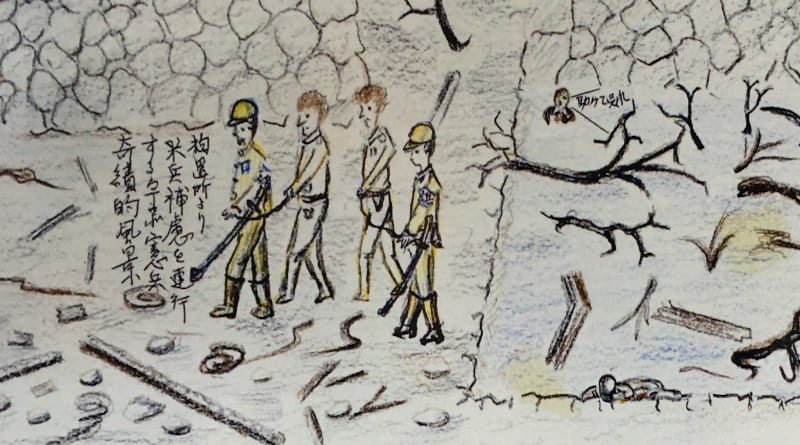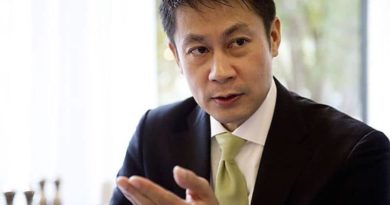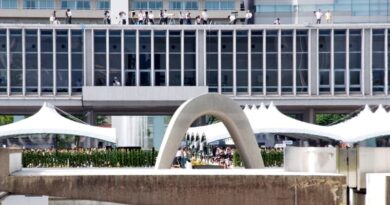US POWs and the A-bomb
This fascinating and touching 45 minute documentary commissioned by Hiroshima TV investigates the final days of two American POWs who survived the A-bomb attack on August 6, 1945
A man sits on the ground, hands tied behind his back and bound to a pillar, while the building now known as the A-bomb Dome burns in the background. Japanese military police lead two men with brown hair through the burnt plain, all that is left of Hiroshima after the A-bomb blast. A soldier nailed to a cross and corpses laid out on tables with labels describing their facial features.
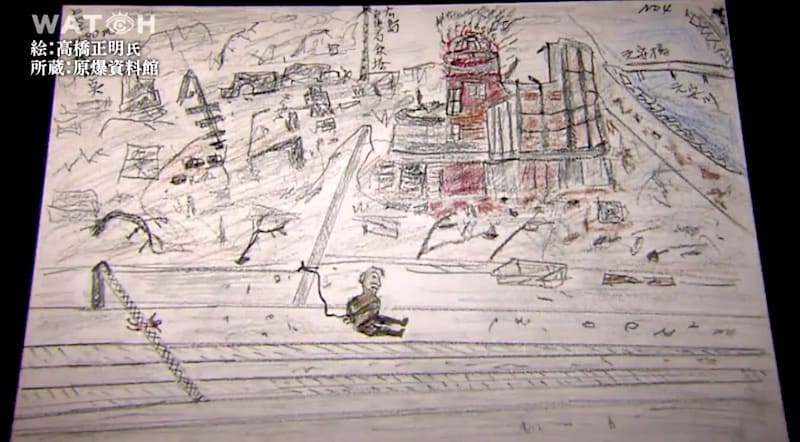
The 45 minute Hiroshima Television film U.S. POWs and the A-bomb opens with these images drawn by hibakusha, survivors of the Hiroshima A-bomb attack, from their recollections years after the event.
A former soldier, who was about 20 years old at the time of the attack, points to a spot below the A-bomb Dome and recounts seeing a man whose face was rendered unrecognisable by the bomb blast, but had blond hair. He recalls throwing a bottle at the corpse, aiming for the head. His face fills with sadness and regret. “It was a bad thing to do”, he says.
One of the reasons for Hiroshima’s selection as the first target for the A-bomb that would be used on August 6, 1945 was that it was the only candidate city that didn’t have a POW camp. However, on July 25 and 28th the shipyards at Kure, just along the coast from Hiroshima, were attacked.
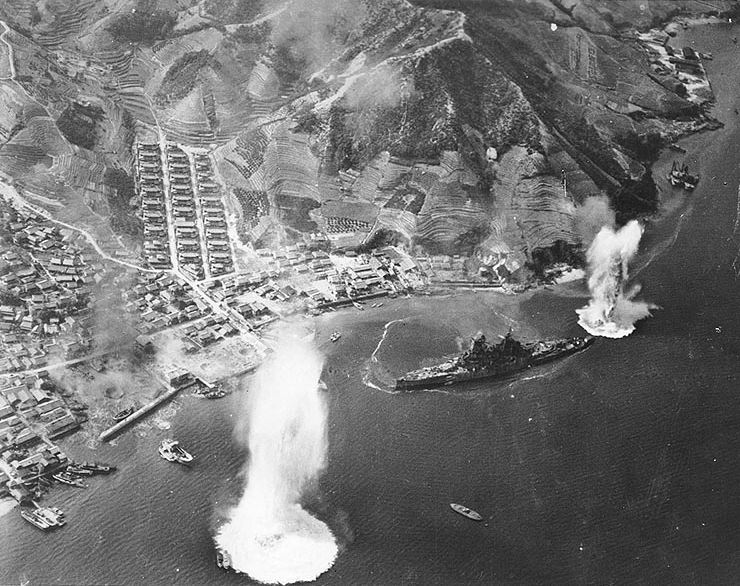
The men who were able to parachute to safety from several US planes shot down by anti-aircraft fire were captured and taken to Hiroshima, from where they were to be transported to POW camps after questioning. Some were moved to other locations, but twelve U.S. POWs remained in Hiroshima on August 6. Two, Normand Brissette and Ralph Neal survived the initial blast, only to succumb to the effects of the bomb, after 13 days of excruciating pain and sickness, on August 19 1945.
The film traces the stories of the two men (thought to be the two brown-haired men being moved by the military police depicted in one of the drawings), pieced together through the dogged efforts of local Hiroshima historian Shigeaki Mori who worked for years to find the families of the US POWs who died in Hiroshima and have their names placed on the official register of A-bomb victims housed in the cenotaph in Hiroshima’s Peace Memorial Park. Mori was the man U.S. President Obama embraced after his speech in Hiroshima Peace Memorial Park in May 2016, images of which went around the world.
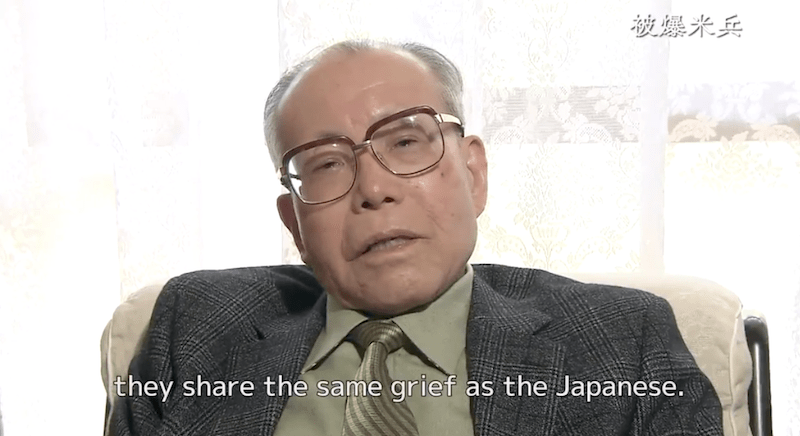
The story overlaps with that of the making of the documentary film Paper Lanterns which was released in 2016, and directed by family friend of the Brissettes, Barry Frechette. It was decades after the war until the US government officially confirmed that US POWs were in Hiroshima at the time of the attack, and through the efforts of Mr Mori, relatives of Brissette and Neal are able to uncover details about the final days of their wartime relatives.
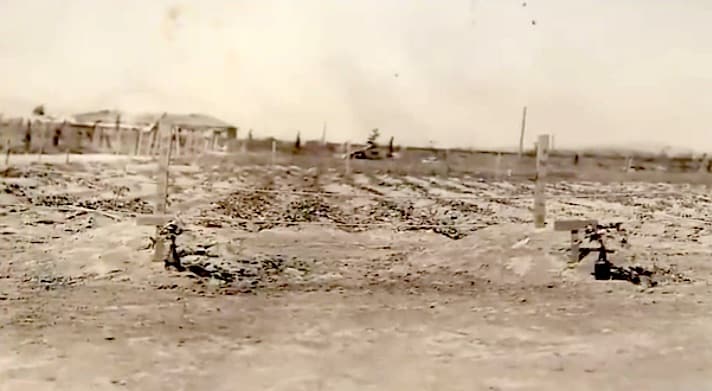
They take great solace in the evident level of respect with which the bodies of Brissette and Neal were treated at a time when people in Hiroshima were struggling to cope with dealing with thousands of dead and dying. Much is left unsaid in the film. There is no mention of the fate of some of the other POWs. When a Hiroshima TV reporter asks Brissette’s 82 year old sister how she feels about he brother losing his life to a bomb developed by his own government, she pointedly refuses to comment. The historical detective story is, however, an emotional journey. It shows how the pulling on the threads of history can bring people together in the spirit of reconciliation; none more so than when the nephew of Ralph Neal meets one of the Japanese sailors who was loading the anti-aircraft guns on the deck of the ship that his uncle’s plane was sent to destroy.
As part of Hiroshima TV’s Message From Hiroshima season U.S. POWs and the A-bomb is streaming (with English subtitles) for free on the Hiroshima Television website along with 4 other HTV A-bomb documentaries until March 31, 2018. It is well worth taking 45 minutes to watch it.


